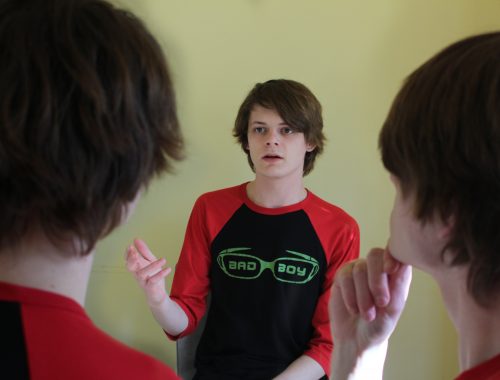The Big Day
As a child, I have always dreamed of becoming a teacher, having my own classroom, and being a role model for young students. However, what I didn’t dream of was the interview for the job, stuck in a waiting room sitting beside other anxious applicants, in the hope that my name would be called soon, and the nervous wait would cease.
Figure 1

When I began this module in September, I was initially relieved to see the stimulated interviews listed in the module outline document, an opportunity given that allows a dry run for a potential future job. With having sent off my PGCE applications and receiving interview dates, I wanted to make the most of the opportunity given.
Through using Gibbs’ Reflective Cycle which can be seen in figure 1, throughout this blog I will be reflecting on my experience with the stimulated interview.
Figure 2

When I had the option of picking any job for my stimulated interview, I knew it would be a teaching job, but what I didn’t know was whether it would be a primary or post-primary job. The ongoing debate over what job to pick had been going on for longer than I’d like to admit. Before I finally settled on post-primary, so then the job hunt began. I knew the job market for teaching was sparse, more specifically I knew the opportunities for music teacher jobs at home would be a tough hunt. Unfortunately, to find the job that I wanted I had to look across the water to England, where I came across a music teacher position at Selby High School which is a specialist school for the arts and science, located in Selby, North Yorkshire. Selby High School seemed a perfect choice, with the job description stating that they were looking for a classroom teacher who wants to have a significant impact on the extra-curricular life of the school. I felt I was the perfect candidate, with experience teaching flute privately and assisting my former school, St Dominic’s Grammar School’s Junior, and Senior Orchestra, as well as, being a member of Queen’s University Symphony Orchestra, I felt I had the experience and enthusiasm that was needed to organise and assist the extra-curricular activities.
As part of my interview preparation, I spent time doing my research about the education sector to make sure I was well informed and could answer any questions relating to current affairs as well as, incorporating my research into my answers. As my job was based in England, I spent time looking at the education curriculum in England, the standards and testing agency, the Department for Education’s website, and the BBC Education webpage.
When I arrived at my interview, the unwelcomed feelings of nerves and panic started to arise, my mind was rushing with statistics that I had read throughout my preparation for the job interview such as “65% of candidates that don’t make eye contact don’t get the job”[1] and “Recruiters need about 90 seconds to determine whether they would hire a candidate.”[2]
I knew that this interview process would be hugely beneficial for me as it would give me not only an insight into how my future job interviews may go but also an idea on how my looming PGCE interviews may be structured and could include overlapping questions. From Emma Lenox’s lecture, which happened the week previous, I knew what types of questions I could be expecting; small talk, technical, hypothetical, motivational, and questions that would analyse an applicant’s competency. It was from the same lecture that I learned the STAR technique, a method that I had never heard of before Emma had carefully explained to us which allowed the interviewee who structured their answers around the method to provide an answer that was direct, logical, meaningful, and tailored.
Figure 3

(Live Assets, 2018)
The STAR technique which can be seen in figure 3, details the method to answer difficult interview questions, with the preparation beginning with the detailed listening to the chosen question, which is followed by describing the situation, explaining the task that was completed before describing the actions taken in completing the task and closing the answer with the result of the efforts made.
Figure 4

(Recruiting Resources: How to Recruit and Hire Better, 2017)
The interview was overall a positive experience, whilst rhyming off the well-learned answers that I had prepared in the hope that I would be asked questions such as “why do you want to be a teacher” and “what skills and qualities do you have that would make you a good teacher”. I tried to keep a conscious effort to maintain eye contact, have open body language whilst speaking at a normal-paced rate, rather than a ramble with the hope to get all my information and experience out. However, this proved to be a more difficult task than I had anticipated, having found myself stopping myself after having raced off on an answer on more than one occasion. Having had this experience, it is something that I will be more conscious of and will have learned from my mistakes for my future and upcoming interviews.
The feedback given by my peers can be seen in figure 5. Although my feedback was limited, it was positive, affirming that I had used the star technique correctly, and I understood the questions and tailored my answers to the questions given.
Figure 5

Bibliography
- Gibbs G (1988) Learning by Doing: A guide to teaching and learning methods. Further Education Unit. Oxford Polytechnic: Oxford
- SeedScientific. (2021). 36 Helpful Interview Statistics to Get You Going in 2022. [online] Available at: https://seedscientific.com/interview-statistics/ [Accessed 3 Feb. 2022].
- Jacimovic, D. (2020). 29 Astonishing Interview Statistics. [online] WhatToBecome. Available at: https://whattobecome.com/blog/interview-statistics/.
- Live Assets. (2018). How to Use the STAR Interview Response Technique | Live Assets Blog | Toronto’s #1 Recruitment Agency. [online] Available at: https://liveassets.ca/star-interview-response-technique/.
- https://www.facebook.com/bbcnews (2019). Family & Education News – BBC News. [online] BBC News. Available at: https://www.bbc.co.uk/news/education.
- GOV.UK. (2019). Standards and Testing Agency. [online] Available at: https://www.gov.uk/government/organisations/standards-and-testing-agency.
- GOV.UK. (2019). Department for Education. [online] Available at: https://www.gov.uk/government/organisations/department-for-education.
- CareerAddict (2019). 20 Essential Skills and Qualities Every Teacher Needs. [online] Careeraddict.com. Available at: https://www.careeraddict.com/teacher-skills.
- Recruiting Resources: How to Recruit and Hire Better. (2017). Interview checklist for employers: How to conduct an interview. [online] Available at: https://resources.workable.com/tutorial/how-to-conduct-an-interview.
- teaching-vacancies.service.gov.uk. (n.d.). Teacher of Music – Selby. [online] Available at: https://teaching-vacancies.service.gov.uk/jobs/teacher-of-music-selby-high-school-specialist-school-for-the-arts-and-science [Accessed 10 Feb. 2022].
Blowing Your Own Trumpet 101
Hired Or Fired?
You May Also Like

Finding the Right Balance: My Simulated Interview Experience
14 February 2022
Shocker, Tom also sucks at interviews!
18 February 2022
